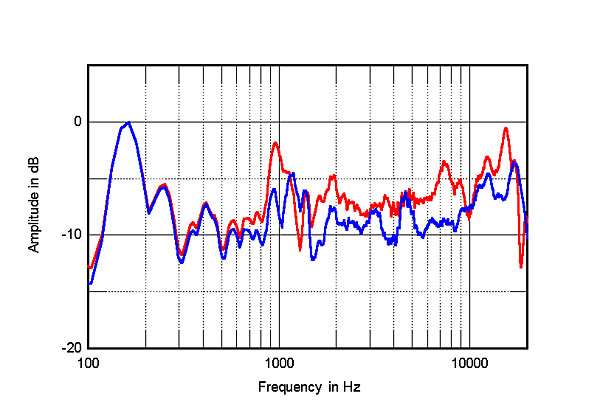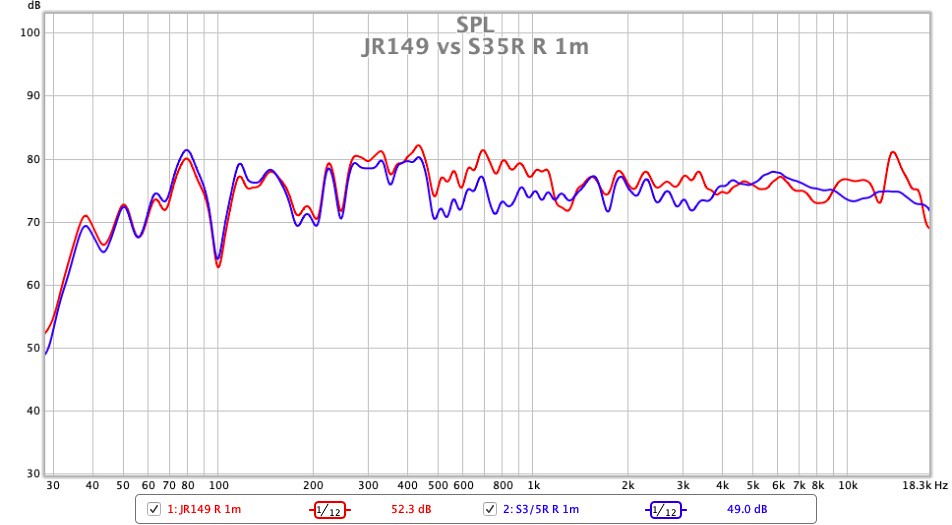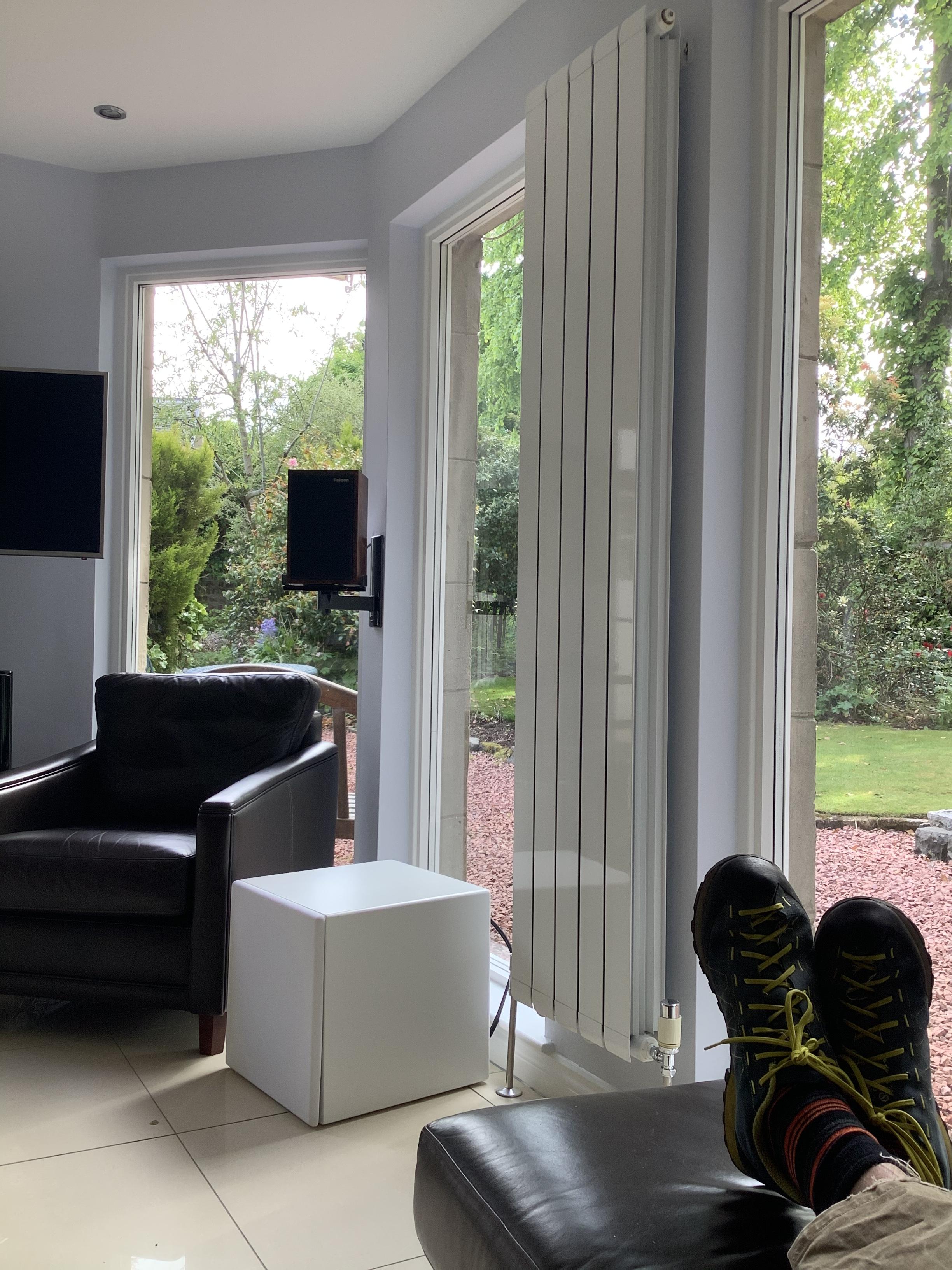You are using an out of date browser. It may not display this or other websites correctly.
You should upgrade or use an alternative browser.
You should upgrade or use an alternative browser.
Falcon LS3/5a
- Thread starter Robby
- Start date
tuga
Legal Alien
I have now put a few more hours on these speakers and getting to grips with their sound signature.
First things I have noted:
So far, so good but I do miss what the Boenicke’s can do.
- These are definitely a monitor speaker - not the speaker I was expecting (naively) to be honest. They are more detailed and transparent than I was anticipating. Poor recordings are more exposed than I am used to.
- The midrange is glorious - getting on the for the best I have heard (and I have heard a lot)
- Treble is excellent with a great deal of detail (I guess it’s their monitor heritage on display)
- Bass response is strange - you listen to some tracks and you think they sound anaemic with nothing in the lower registers. Then you listen to another track and there is it is. It will never pin you in your chair but what is there is communicative and drives the music forward. So far they seem to like Pink Floyd.
According to Stereophile's measurements the Falcons should sound brighter than the originals ('78 Rogers), and should be kept away from the side walls as this will make matters worse (maybe have the axis cross in front of the listening spot if listening mid-field).
It's those speakers which produce similar amounts of bass that one should avoid. Higher-fidelity ones merely reproduce the amount of bass that is in the recording instead of a one-note boom.
That said, none of the LS3/5a-style speakers can produce any low- or sub-bass that we can speak of and in my view pairing with subs is mandatory. To compensate for the crippled low end a small bump has been engineered into the frequency response at the bottom of the passband and this may be enough for casual or relaxed listening.
A quick update.
I knew the weak spot in my set up was the ANV-50. It's strong points - deep powerful, driving bass and extended treble were - not a match for the Falcon's midrange-centric presentation.
After much deliberation and research I decided to get a Sugden IA4. It's been in my system for 24 hours but the difference is profound. The speakers sound significantly more balanced and as a result it feels like there is more presence in the bass.
I have the Falcons set up around 30 cm from the the long wall in my lounge which gives a good balance. I have not experimented with toe in yet.
As for subwoofer(s) I don't see the need with what I am hearing at the moment. The bass is excellent. It's never going to shake the windows but what is there is tuneful and impactful enough for me.
All in all I am delighted with the inclusion of the IA4.
I knew the weak spot in my set up was the ANV-50. It's strong points - deep powerful, driving bass and extended treble were - not a match for the Falcon's midrange-centric presentation.
After much deliberation and research I decided to get a Sugden IA4. It's been in my system for 24 hours but the difference is profound. The speakers sound significantly more balanced and as a result it feels like there is more presence in the bass.
I have the Falcons set up around 30 cm from the the long wall in my lounge which gives a good balance. I have not experimented with toe in yet.
As for subwoofer(s) I don't see the need with what I am hearing at the moment. The bass is excellent. It's never going to shake the windows but what is there is tuneful and impactful enough for me.
All in all I am delighted with the inclusion of the IA4.
TheDecameron
Unicorns fart glitter.
Yes, they certainly sound brighter than I recall from past Rogers iterations. The first thing that struck me about the Falcons was that they are simply more revealing than I can remember from the past but the I imagined that was due to more revealing sources and amps in 2020 compared with 1988! I had assumed the BBC spec would make all the KEF driver LS3/5as sound the same?According to Stereophile's measurements the Falcons should sound brighter than the originals ('78 Rogers), and should be kept away from the side walls as this will make matters worse (maybe have the axis cross in front of the listening spot if listening mid-field).
It's those speakers which produce similar amounts of bass that one should avoid. Higher-fidelity ones merely reproduce the amount of bass that is in the recording instead of a one-note boom.
That said, none of the LS3/5a-style speakers can produce any low- or sub-bass that we can speak of and in my view pairing with subs is mandatory. To compensate for the crippled low end a small bump has been engineered into the frequency response at the bottom of the passband and this may be enough for casual or relaxed listening.
tuga
Legal Alien
Yes, they certainly sound brighter than I recall from past Rogers iterations. The first thing that struck me about the Falcons was that they are simply more revealing than I can remember from the past but the I imagined that was due to more revealing sources and amps in 2020 compared with 1988! I had assumed the BBC spec would make all the KEF driver LS3/5as sound the same?
I would more likely point the finger at the Falcon version of the T27, not the midwoofer.

Falcon LS3/5a (red) and 1978 Rogers LS3/5a (blue), in-room responses on tweeter axis,
100Hz–20kHz, at 50" with pink noise (5dB/vertical div.)
https://www.stereophile.com/content/falcon-acoustics-ls35a-loudspeaker-measurements
TheDecameron
Unicorns fart glitter.
Would be interesting to see a comparison plot with the new Rogers version. Had a quick search on Stereophile but didn’t find a technical appraisal by JA. In any event the the Falcon may well benefit in comparative demonstrations- the treble is good and not overhyped subjectively. When I got the Falcons out of the box, I thought they were going to bear an obvious family resemblance to the HLP3ESR, Spendor S3/5R group but they don’t and nor do they resemble the Spendor D1 which is also a very different animal from the others. The D1 is dark and smooth sounding but with very refined treble and top notch resolution. Interesting times- an embarrassment of riches on the BBC -style mini front.
...When I got the Falcons out of the box, I thought they were going to bear an obvious family resemblance to the HLP3ESR, Spendor S3/5R group but they don’t and nor do they resemble the Spendor D1 which is also a very different animal from the others. The D1 is dark and smooth sounding but with very refined treble and top notch resolution. Interesting times- an embarrassment of riches on the BBC -style mini front.
Decameron, would you care to expand on what you find distinctive about the Falcon sound compared to the others mentioned. You did say more revealing, brighter than early Rogers. Your note about the Spendor D1 is useful; can you locate the Falcon sound along those lines? I’m particularly interested in comparison to HLP3ESR...
Tony L
Administrator
I would more likely point the finger at the Falcon version of the T27, not the midwoofer.
I’d agree as the same spike appears on my JR149s, which have the (superb) Falcon units fitted. Here’s one of mine vs. a S3/5R:

Sadly the spike is just as much an irrelevance to me as most other audiophiles over 50 as we just can’t hear up there anymore, but surprising to see nonetheless as I don’t think it existed on the original T27 which Falcon so obsessively cloned. The chart is also interesting as it highlights just how much of these measurements are actually the room, even a great sounding room with the speaker measured at just one meter. It certainly proves self professed experts shouldn’t attempt to make absolute statements about speakers based on amateur measurements (i.e. those outside an anechoic chamber). The only thing of interest here are the differences between the two speakers. Absolutely everything else should be ignored as irrelevant to anyone but me (as it is my room and up-stream system).
Martyn Miles
pfm Member
As a previous owner of the Falcons and the Harbeth P3s, I would love the hear the new Rogers
Classic in my own home on a familiar system.
Classic in my own home on a familiar system.
TheDecameron
Unicorns fart glitter.
Decameron, would you care to expand on what you find distinctive about the Falcon sound compared to the others mentioned. You did say more revealing, brighter than early Rogers. Your note about the Spendor D1 is useful; can you locate the Falcon sound along those lines? I’m particularly interested in comparison to HLP3ESR...
Yes, when I compared the HLP3ESR with the Spendor S3/5R and R2 last year, I commented in that thread that the Harbeth was closer to the LS3/5a based on my recollection of the Rogers 15 and 11ohm versions I had years ago. Then when I got the Falcons, I got a surprise because they sounded very different from all of the above and I put that down to perhaps never hearing really fresh KEF drivers or using better equipment compared to 30 years ago. Tuga’s post above with the Stereophile graph gives a different explanation and Art Dudley puts the effect into words and I would share his impression-
https://www.stereophile.com/content/listening-199-falcon-graham-ls35a-page-2
“I then tried the same Nick Drake tracks with the Falcon LS3/5a's—and the sound was noticeably different. Through the Falcons the recorded sound as a whole was considerably more open; not only were the voice and guitar even more present, their textures more apparent, but the acoustic space around those elements was wider and taller, and altogether more audible, than through the Grahams”.
and-
“That the Falcons delivered more treble-range content was apparent after matching the system's loudness through the two different speakers“.
Bingo! There it is- not aging drivers, not better ancillary equipment but intrinsically different speakers.
The D1 isn’t on the same continuum as the rest- it goes off at a tangent. I will have to sit down and compare the D1 with the Falcons to get a proper handle on it.
TheDecameron
Unicorns fart glitter.
I found the BK xxls400 sub worked beautifully with the Falcons right from the off. I then started thinking about spending more on a sub but was concerned I would either rock the boat or not gain anything for the extra outlay. I was using it with the Falcons in a near field position in another room and it was the first time I’ve ever found a sub working this well. It doesn’t sound as nearly good with Spendor D1s which are fuller sounding at LF.A quick update.
I knew the weak spot in my set up was the ANV-50. It's strong points - deep powerful, driving bass and extended treble were - not a match for the Falcon's midrange-centric presentation.
After much deliberation and research I decided to get a Sugden IA4. It's been in my system for 24 hours but the difference is profound. The speakers sound significantly more balanced and as a result it feels like there is more presence in the bass.
I have the Falcons set up around 30 cm from the the long wall in my lounge which gives a good balance. I have not experimented with toe in yet.
As for subwoofer(s) I don't see the need with what I am hearing at the moment. The bass is excellent. It's never going to shake the windows but what is there is tuneful and impactful enough for me.
All in all I am delighted with the inclusion of the IA4.

Tony L
Administrator
I found the BK xxls400 sub worked beautifully with the Falcons right from the off. I then started thinking about spending more on a sub but was concerned I would either rock the boat or not gain anything for the extra outlay.
If you like the sub and it integrates well consider getting another. Stereo subs always better than one IME.
TheDecameron
Unicorns fart glitter.
I’m sort of keeping an eye out for a second BK 400...If you like the sub and it integrates well consider getting another. Stereo subs always better than one IME.
BigBlue2020
pfm Member
I thought all Ls3/5a's were supposed to sound similar ie within the original BBC design parameters ?
I’m sort of keeping an eye out for a second BK 400...
I'd be interested in how you went about integrating the subwoofer into your system.
When I had a pair of Harbeth P3ESR's I bought an REL subwoofer and spent two miserable weeks trying to get a smooth crossover between the two and ended up giving up.
TheDecameron
Unicorns fart glitter.
Me too. I thought ‘I’ve just got myself an expensive chair side table to put a cup on’. I read the review of Graham/ Chartwell passive sub which stated it has a 4th order low pass filter at 100Hz, so I set the pre outputs on a Devialet to mimic that and it worked well straight away though I found the same result using the sub itself set to 100Hz. I was even fiddling with the Devialet to put a high pass on the speaker outputs to the Harbeths to see if that improved matters but didn’t manage.I never got an obviously good result with the Harbeths and I’d say the sub even made D1s sound worse.I'd be interested in how you went about integrating the subwoofer into your system.
When I had a pair of Harbeth P3ESR's I bought an REL subwoofer and spent two miserable weeks trying to get a smooth crossover between the two and ended up giving up.
Me too. I thought ‘I’ve just got myself an expensive chair side table to put a cup on’. I read the review of Graham/ Chartwell passive sub which stated it has a 4th order low pass filter at 100Hz, so I set the pre outputs on a Devialet to mimic that and it worked well straight away though I found the same result using the sub itself set to 100Hz. I was even fiddling with the Devialet to put a high pass on the speaker outputs to the Harbeths to see if that improved matters but didn’t manage.I never got an obviously good result with the Harbeths and I’d say the sub even made D1s sound worse.
Wow! Very useful, but also intimidating. I’d just about reached the point where I was going to try to integrate a sub with Harbeth (P3ES-2). I knew it could be tricky, but didn’t know the specific sub-speaker match-up would be quite so critical...
Martyn Miles
pfm Member
https://www.stereophile.com/content/listening-199-falcon-graham-ls35a-page-2
“I then tried the same Nick Drake tracks with the Falcon LS3/5as—and the sound was noticeably different. Through the Falcons the recorded sound as a whole was considerably more open; not only were the voice and guitar even more present, their textures more apparent, but the acoustic space around those elements was wider and taller, and altogether more audible, than through the Grahams”.
The above could apply to my Stirling Broadcast LS3/5s V3s when listening to Nick Drake.
I have owned the Falcons and as far as I'm concerned, the Stirlings outperform them.
Electrostat
pfm Member
A very substantial percentage of LS3/5A owners drive them with valves, and for good reason IMHO. A good well chosen valve amp can add a little stereotypical valve warmth and heft and lose the tendency to slightly exaggerate the top-end. I certainly can’t imagine not wanting either a valve pre or power upstream of my closely related JR149s. Both speakers are an ideal match too as they are 8-16 Ohm and a very easy load if inefficient.
It is also important to recognise they are a tiny near-field monitor and not to expect them to fill a large room. They give their best up close, and where the walls are in relation to the speakers and listening chair certainly play a part. They don’t want to be real close to a wall, but they do need some reinforcement. The real magic is within a fairly small listening triangle IME. It is here they do the things big speakers can not.
What do you think is an optimal distance from the front wall where the midrange isn't muddied but there is still a bit of bass reinforcement?
Tony L
Administrator
What do you think is an optimal distance from the front wall where the midrange isn't muddied but there is still a bit of bass reinforcement?
It varies room to room, the distance of the seat to the rear wall is highly significant too.

